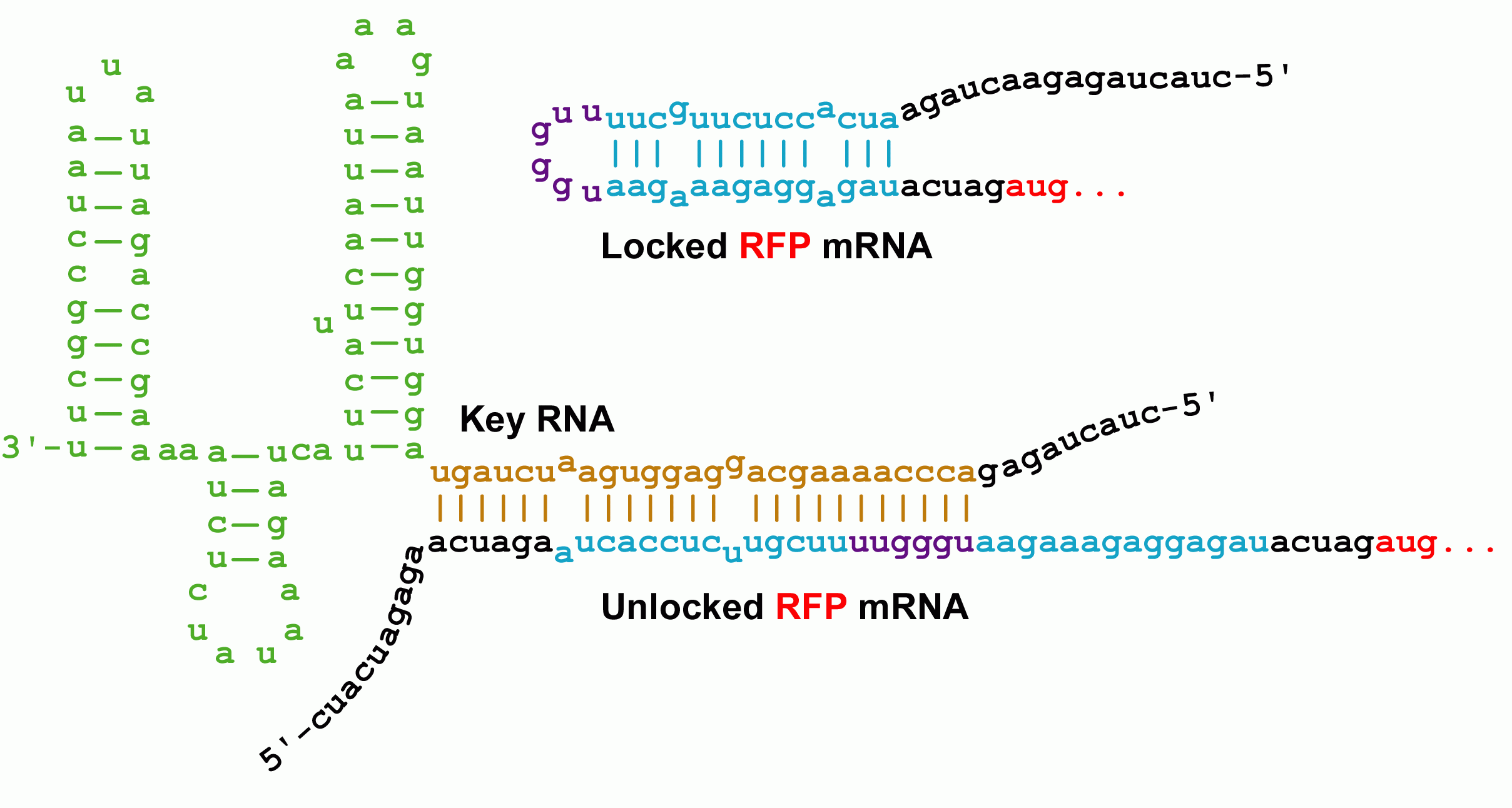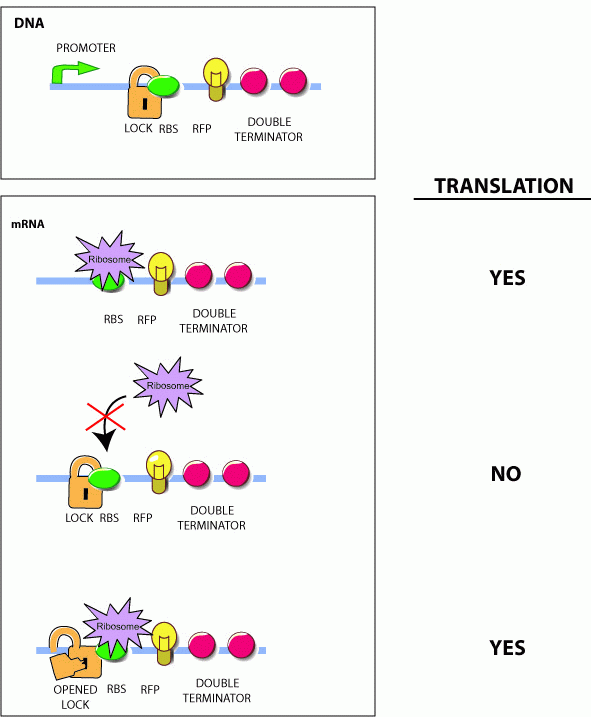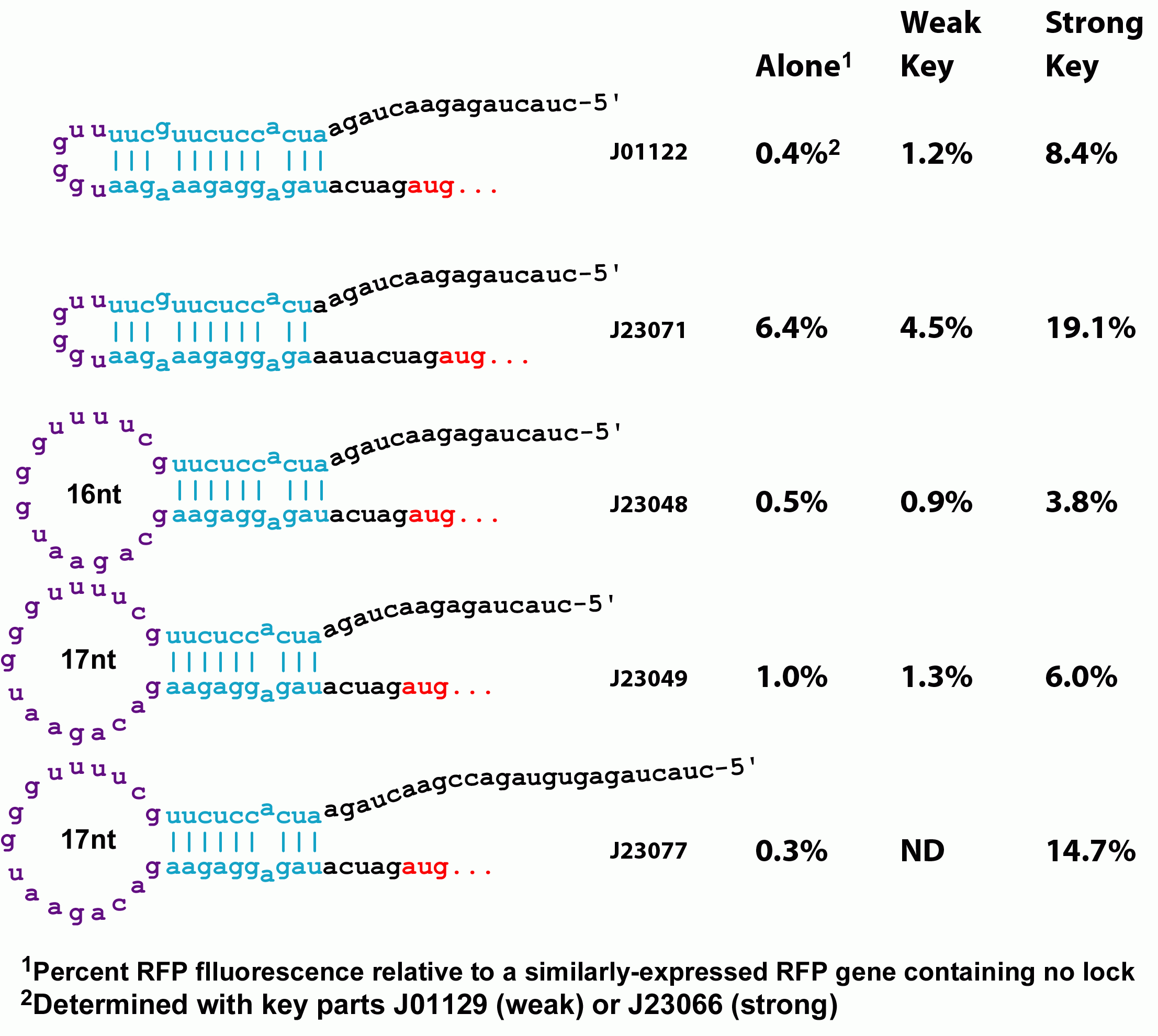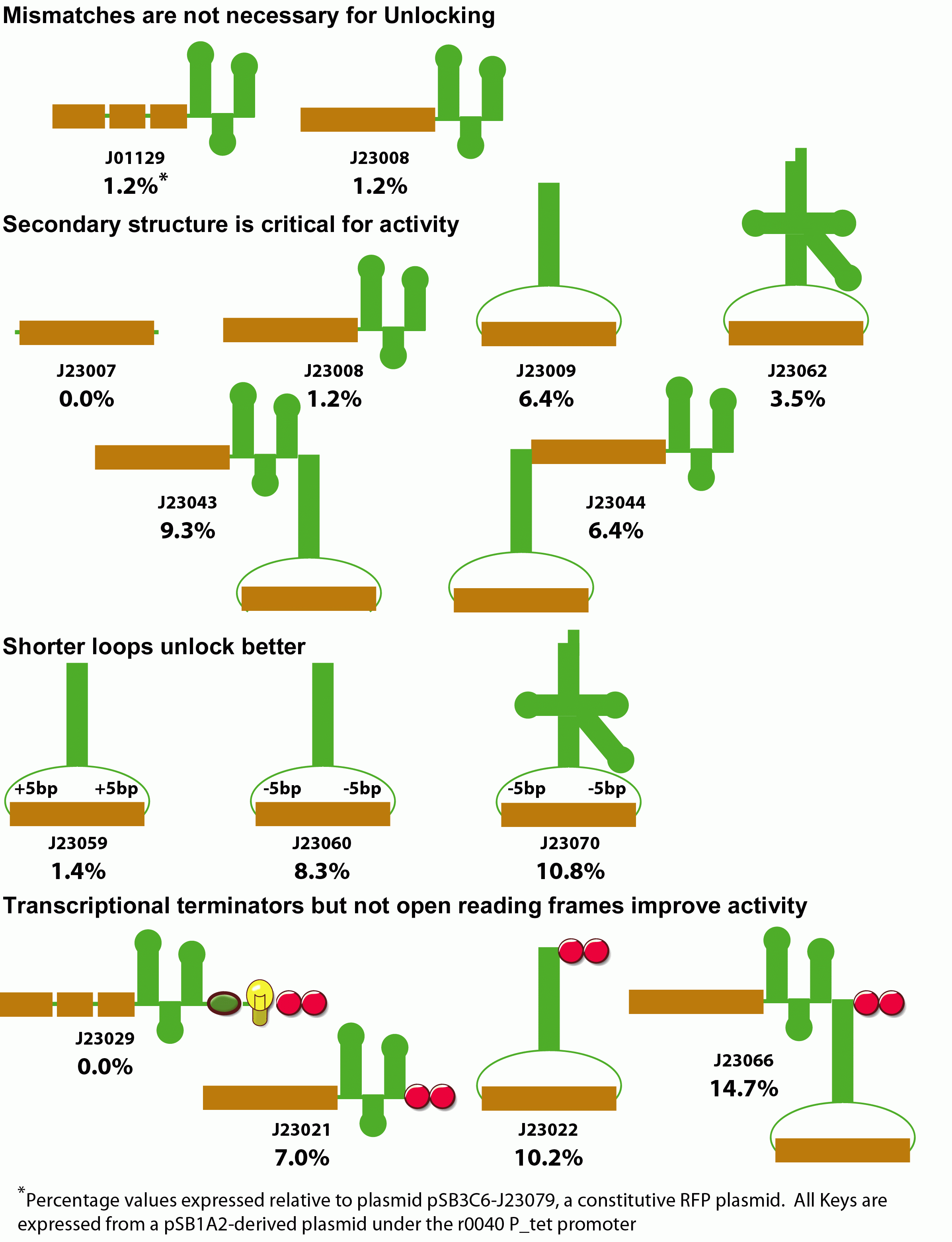Berkeley2006-RiboregulatorsMain
From 2006.igem.org
Within our addressable conjugations system, every cell contains a unique nucleic acid "address" sequence. This address is encoded within an RNA riboregulator "lock" and is used to control the bacterium's ability to communicate with other cells. We begin our description with the core components of our system--riboregulator locks and keys.
Riboregulators translationally control gene expression and are composed of two RNA parts--a lock and a key sequence. The lock sequence replaces the ribosome binding site of the controlled gene. Within the lock, a ribosome binding site is connected by a short linker sequence to its own reverse complement. This results in a hairpin structure that occludes the ribosome binding site thereby prevent access to the ribosome.
Genes under the control of the lock therefore show very little protein formation. The key sequence is expressed from a separate gene (in trans) and encodes a sequence complementary to the lock. The identity of this sequence is the address in our addressable conjugation system. When the key anneals to the lock sequence, the ribosome binding site becomes exposed permitting expression of the downstream gene.
The RNA sequence outside of the lock's ribosome binding site binding region is of arbitrary sequence. However, this sequence must still match the key sequence to obtain unlocking. It should therefore be possible to construct millions of non-crossreactive variants of the riboregulator system.
Next section: Conjugation



